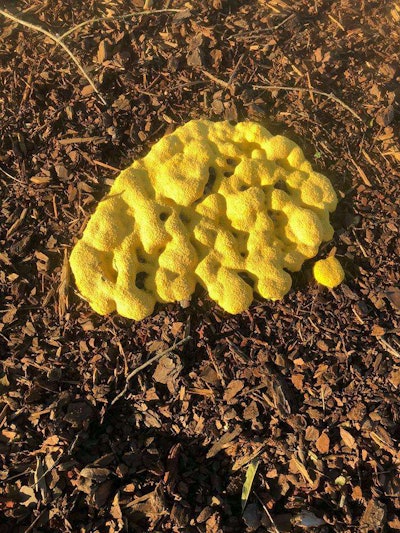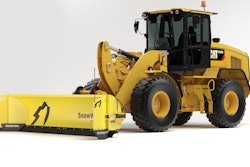 Photo: Jill Odom
Photo: Jill OdomAlong with the arrival of summer comes the appearance of a strange, somewhat unsightly substance commonly referred to as slime mold.
What some customers may think is dried insulation foam or even dog vomit could actually be slime mold making its way across their landscape. Fret not, though. While it may look threatening to your customer’s yard, slime mold is not toxic and will do no harm to the landscape.
Whether you’ve had customers contact you about seeing slime mold in their yard or you’ve just heard of it yourself, take a look at what it is, how it grows, and how to get it out of the way.
Slime mold and how it grows
First classified as primitive fungi, the Nebraska Extension in Lancaster County says slime mold is now classified botanically out of the kingdom of fungi. They are instead classified in the kingdom of Amoebozoa, which means they are more similar to amoebas than mushrooms.
Slime molds are first germinated from a spore, much like a fungus, and then turn into a cell that can move. These cells are able to swim through water on the surface of items, such as leaves or pieces of mulch, and they will ultimately fuse together to form a large mass.
The extension notes that the slime mold exists as one cell, called a plasmodium, which is made up of many nuclei all held together in one cytoplasm bag. The size of the plasmodium can vary from large to small, but more often than not, slime molds are about 4-5 inches across.
The molds are able to grow by feeding on fungal spores, bacteria, and other organic matter. The actual name ‘slime mold’ comes from a certain stage of life the plasmodium goes through, in which it is a wet, slimy mass. This stage is mobile and able to move several feet a day. They come in a variety of colors, such as yellow, red, white, and gray.
Slime mold typically appears in a landscape when there’s been heavy rainfall or excessive watering in an area. The mass will dry and harden once the temperature rises and the surrounding environment becomes hot and dry, but once conditions become cooler and moist again, the slime mold will continue to feed.
Once the mold’s food sources have diminished, it will enter into the spore production stage; these spores may remain dormant in the soil or surrounding leaf litter for many years before growing once more.
Is it harmful?
While it may look ominous and a bit disgusting at times, slime mold won’t hurt your customer’s landscape. And the good news is that the removal process is quite simple.
If you find slime mold growing on your customer’s mulch, the Nebraska Extension in Lancaster County recommends breaking it up and washing it into the soil with water. Or, it can be scooped out of the mulch and placed in the trash if that puts your customer’s mind more at ease.
If you find it growing on their grass, the Nebraska Extension in Lancaster County suggests raking the area to knock the mass off the leaf blades or using a forceful stream of water to get rid of it. While slime molds use the leaf blades of turfgrass as a growing surface, they do not damage the grass.
Fungicides are not recommended or necessary for the removal process, according to the Nebraska Extension in Lancaster County.











